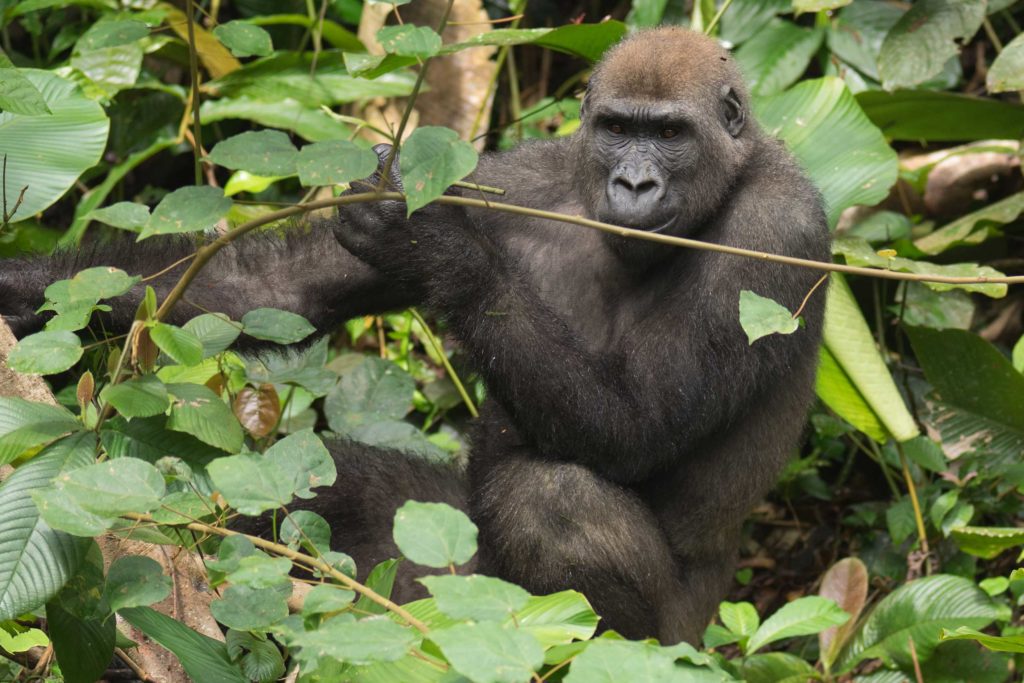Gabon
Gabon in Central Africa, with the second biggest forest in the world, is a paradise for botanists and zoologists – a special place for ecotourism. With forest covering 80% of the country, a sparse population (density of only 4 people per square km) with the majority living in the cities. few poorly built roads together with difficult climatic conditions, there is little pressure on nature.
Gabon has 13 National Parks – although not all the parks are accessible – and ranks amongst the highest wildlife density in the world. An incredible numbers of animals in a wide variety of species are to be found, including western lowland gorillas sun-tailed monkey, mandrill, forest elephant, bongo and the Rock fowl.
There are also incredibly magical places, such as the refuges of the ice age hiding species of unknown plants, the sumptuous inselberg, mountains overseeing the jungle, great and magnificent isolated waterfalls seen only by the animals in the forest, beaches where hippos, elephants and buffaloes bathe, lush rivers and lagoons bordered by papyrus or mangroves, waterhole clearings where the elephants, gorillas, sitatungas and birds all come together in a harmony worthy of an earthly paradise.
In Loango National Park, described as the most beautiful and diverse national park of Gabon, you can find elephants and buffalos roaming freely on its endless beaches and Humpback whales migrate along the coast to their mating and calving areas. Red forest buffalo, red river hogs and chimpanzees are among the many species of wildlife that may also be seen here.
Of the 40 or so Bantu tribes now present in Gabon, the largest are the Fang, Eshira, Mbele and Okande. Only a small percentage of native Gabonese live in the towns, as the population is concentrated in the coastal areas and the villages along the banks of the many rivers, following a more traditional rural style of life. There are several languages in Gabon. The official language is French, while the principal African language is Fang. Eshira is spoken by a tenth of the population, and Bantu dialects spoken include Bapounou, Miene and Bateke.
Libreville is the capital and largest city in the country and provides an enjoyable stopover point with numerous hotels and restaurants.
The Democratic Republic of São Tomé and Príncipe is a Portuguese-speaking island nation in the Gulf of Guinea consisting of two islands, São Tomé and Príncipe, located about 140 kilometres apart and about 250 and 225 kilometres, respectively, off the northwestern coast of Gabon. Both islands are part of an extinct volcanic mountain range. São Tomé, the sizable southern island, is situated just north of the equator.

